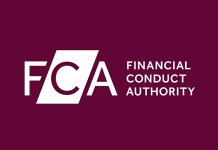A series of measures to help strengthen the UK’s leading position as a global and vibrant financial centre have been announced by The Financial Conduct Authority (FCA).
To try and help all investors make better, more timely decisions, the FCA is proposing to set up a consolidated tape (CT), so they can get clear and low-cost trading data.
A CT potentially combines multiple sources of trading data into one stream of information. This will increase transparency and access to trading data by lowering its cost and improving data quality.
The FCA is proposing a CT first for bonds, followed by equities. The FCA intends to run a competitive tender process to appoint a single CT provider for bonds.
The new consultation paper (CP) sets out its proposed framework for a CT for bonds, which the Wholesale Markets Review (WMR) suggested was a priority. A well-designed CT framework should lead to the emergence of a CTP and with this in mind the FCA is inviting feedback on its proposed criteria for how a CTP would operate and the tender process for appointing a CTP.
It is aiming to have a CT for bond data operating in the course of 2025, following a tender process and subsequent authorisation of the chosen CTP.
The scope of the CT proposed is:
• trading venues are required to send data to a CTP and that the data should be provided in as close to real time as is technically possible;
• a CTP should publish data in real time as soon as reasonably possible after it receives it;
• the CT should include trade reports for all the MiFID categories of bonds other than ETCs/ETNs;
• the CTP should consolidate trade reports for all bonds, other than ETC/ETNs, that are admitted to trading or TOTV in the UK;
• the CT should include only post-trade transparency information;
• the CT data published should cover all fields and flags that are part of post-trade transparency requirements;
• the CT should include only transparency information and not wider regulatory data;
• a CTP should be required to receive data from all trading venues and APAs publishing trade reports on bonds – see MAR 9.2B.34R (1)(a) – and require new trading venues and APAs to connect and send data to a CTP as soon as possible after the start of their operations and in any case no later than six months after.
The regulator is not proposing that there should be a backstop in its rules for the maximum time for trading venues and APAs to send the data to the CTP, and then for the CTP to publish the data after the CTP has received it.
The FCA expects to have enhanced market quality through an improved understanding of trading costs, leading to greater market participation, and a more efficient allocation of investments, with improved outcomes in wholesale markets in terms of addressable liquidity, market transparency and market access.
As part of the Edinburgh reforms, the FCA is working with the government with the aim of having the regulatory framework in place by 2024. By building a more complete picture of the market, a CT is hoped to reinforce the UK’s position in listing and trading bonds.
The FCA will consult on further reforms to bond and derivative transparency requirements later this year, with the aim of creating a simpler and more effective regime to try and enhance the content and delivery of trade data in UK markets alongside the CT.
Nathaniel Lalone, partner at Katten Muchin Rosenman UK, said, “A functioning consolidated tape had started to look like the “white whale” of the MiFID II framework. While an overall assessment of the proposal will depend on the final details – including in particular the timing of data disclosures – it’s clear that the UK is taking an evidence-based, market-aware approach that increases the chance of a successful roll-out. That approach compares favourably to the horse-trading that has characterised the EU negotiations, where the need to find an acceptable political compromise has raised questions whether its consolidated tape will be fit for purpose.”
The FCA has also weighed in on guidance regarding the trading venue perimeter addressing queries that market participants have made.
• Technology providers: The guidance distinguishes between general purpose communications systems and multilateral systems. It sets out a range of factors that we would have regard to when considering whether a service has the characteristics of a trading system or facility.
• Voice brokers: The guidance clarifies that arranging or executing client orders over the telephone does not constitute a multilateral system unless the voice trading system has the characteristics of a system or facility.
• Portfolio managers operating internal matching systems: The guidance clarifies that internal matching systems operated by firms engaged in portfolio management, where shares or other financial instruments are transferred from one fund to another, do not constitute a multilateral system.
• Systems operated for the sole purpose of executing trades on regulated trading venues: Trading firms often arrange deals in large blocks of derivatives outside the systems operated by trading venues and then report them to the exchange for execution. The guidance indicates that where a firm operates a system for the sole purpose of executing trades on a trading venue in accordance with the venue’s rules, these arrangements do not amount to a multilateral system.
• Primary market activity by crowdfunding platforms: The guidance clarifies that a crowdfunding platform which allows clients to participate in company fundraisings by buying shares or bonds from the issuer does not amount to a multilateral system.
• Bulletin boards: Bulletin boards are generally used for advertising buying and selling interests. The guidance clarifies that for these arrangements to be within the perimeter, trading interests must be able to interact within the system (for example, where users are able to respond to requests to deal).
The guidance will come into force in October 2023, but also states its objective is to provide clarity on the rules and will be looking for feedback on them.
Lalone said, “We can hope that, this time, the FCA will take the opportunity to resolve once and for all what is and is not a trading venue under UK law. There is little cause for optimism though: every time more guidance is published on this topic, market participants must once again re-evaluate their models in light of ever more ambiguous and gnomic phrasing. It’s a frustrating exercise that imposes higher costs on affected firms without providing the corresponding benefit of increased regulatory certainty.”
Building on its existing support for new entrants to financial services, the FCA is launching a new pre-application support service (PASS) for overseas wholesale firms and their advisers wishing to expand into the UK, firms already in the UK but planning to set up in the devolved nations and outside the south-east, and those with innovative, complex or high-risk business models.
The service, starting in July, will see more support, such as pre-application meetings and the opportunity for FCA speakers to talk about the wholesale firm authorisation process at industry events, roundtables and conferences.
Sarah Pritchard, executive director of markets and executive director of international at the FCA, said, “We are adapting our rules to make sure the UK market works well, providing certainty for firms and so providing a good environment for investment. The new consolidated tape will help reduce trading costs, increase transparency and improve data quality. Our other measures announced today aim to further support the UK’s thriving financial services sector.”
The regulator said it does not yet have a fixed position on the main design issues considered relating to a CT for equities. Building on the WMR consultation and discussions it has had with a range of market participants, FCA said it see this consultation as an opportunity to receive additional feedback on the arguments to develop a proposal for consultation.
A crucial issue for an equities CT is to set the scope of the data that needs to be included for the CT to be relevant for a wide range of use cases, where the use of the CT drives improved outcomes in wholesale markets including for best execution, price formation and market resilience. Factors likely to affect the specification of an equities CT to achieve these outcomes include the potential user group of an equities CT and the dynamics of the underlying equities market, both of which differ from bonds.
©Markets Media Europe 2023
©Markets Media Europe 2025














